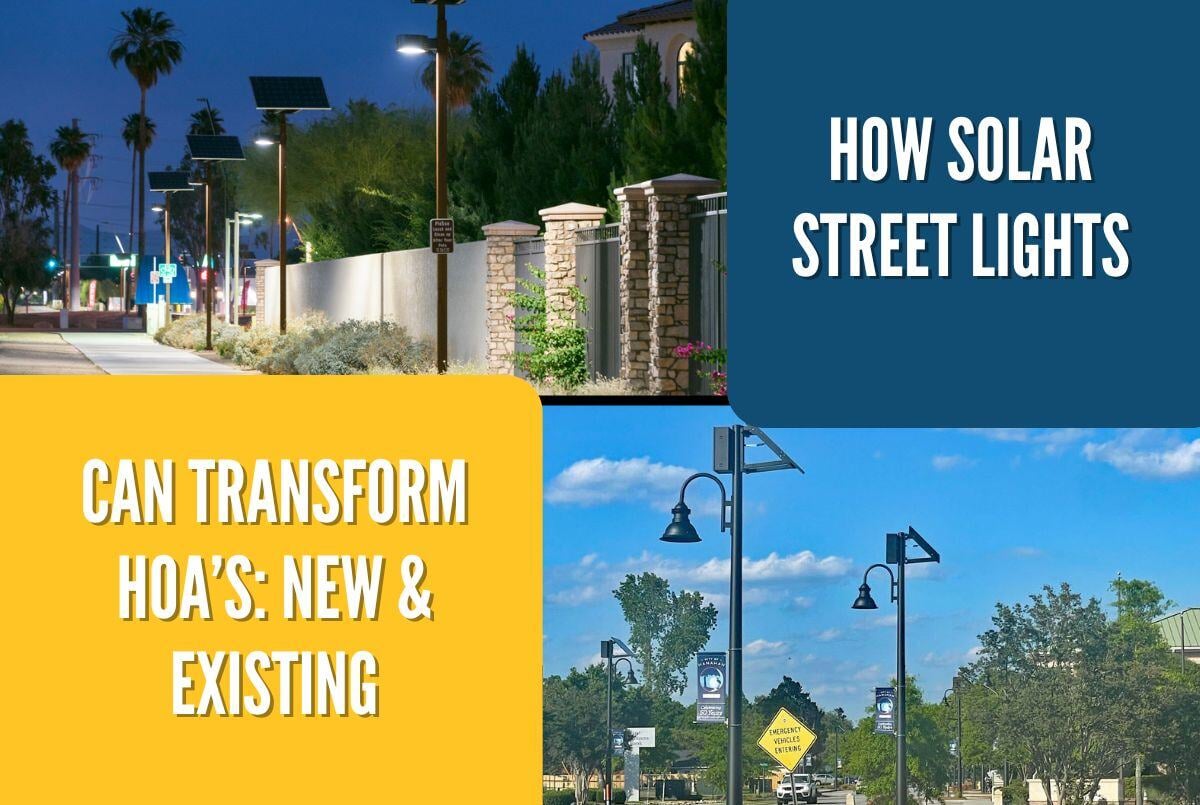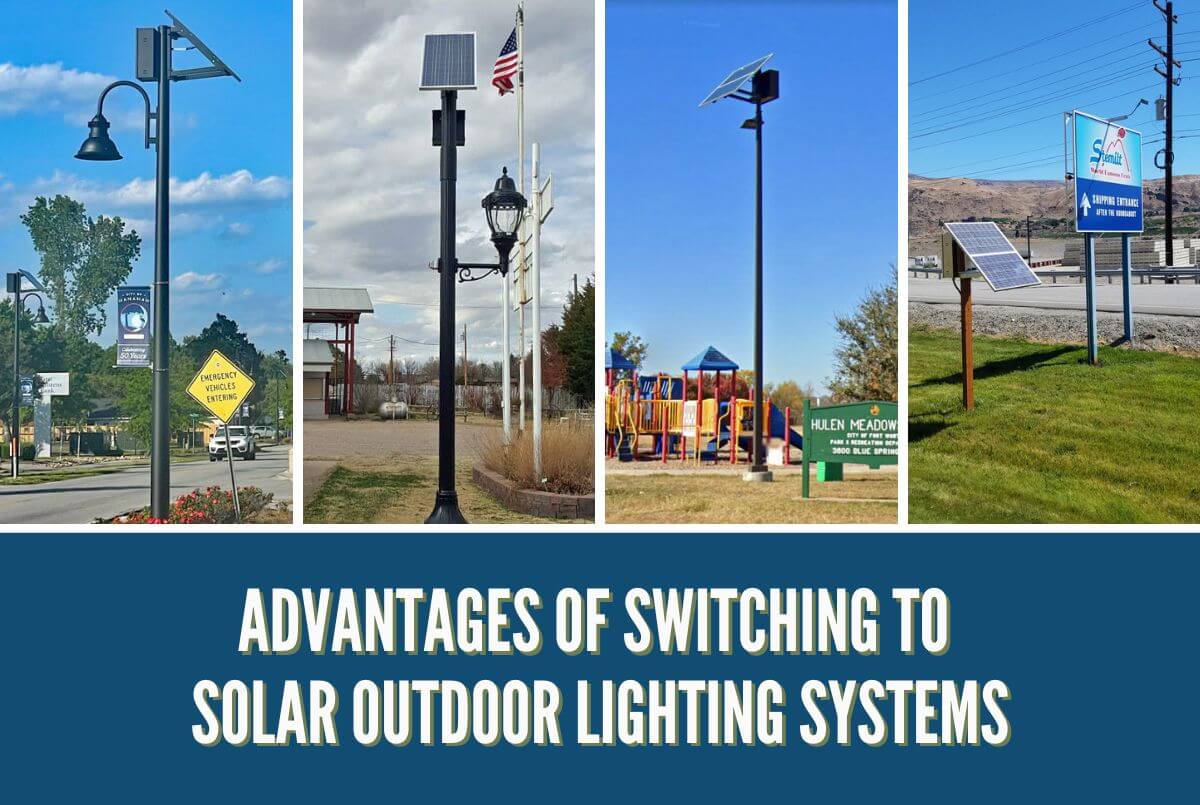Solar LED Street Lighting Systems
Solar street lighting is a sustainable and cost-effective solution for illuminating streets, highways, rural roadways, access roads and more. Our solar street lights provide reliable lighting powered by renewable solar energy, ensuring safety and security in urban and rural environments.
Cost Savings
Solar street lighting systems save businesses, municipalities and developers significant costs by eliminating the need for underground wiring and grid connections. These systems provide reliable illumination without recurring electricity bills, offering an eco-friendly and economical alternative to traditional streetlights.
Environmental Impact
Solar streetlights run entirely on renewable energy, reducing carbon emissions and dependence on non-renewable power sources. Equipped with energy-efficient LEDs, they minimize light pollution and impact on the surrounding environment, helping cities and communities meet sustainability goals while enhancing visibility for traffic and people.
Reliability & Resilience
Engineered to perform in all weather conditions, solar street lights ensure reliable operation even during power outages and after natural disasters. This ensures safety and security for workers trying to restore grid power and moving around potentially dangerous spaces. Their robust construction and adaptive technology make them ideal for urban streets, rural roads, and remote locations.
Solar LED Street Lighting Design
Our solar street lighting design process focuses on collaboration with municipalities, engineers, and urban planners to deliver customized solutions that align with your project’s specific needs. From residential neighborhoods to major roadways, we design systems that blend seamlessly with the environment, ensuring both functional illumination and aesthetic appeal. We can provide a complete lighting analysis with comprehensive layouts, tailoring your system design to meet your requirements and budget.
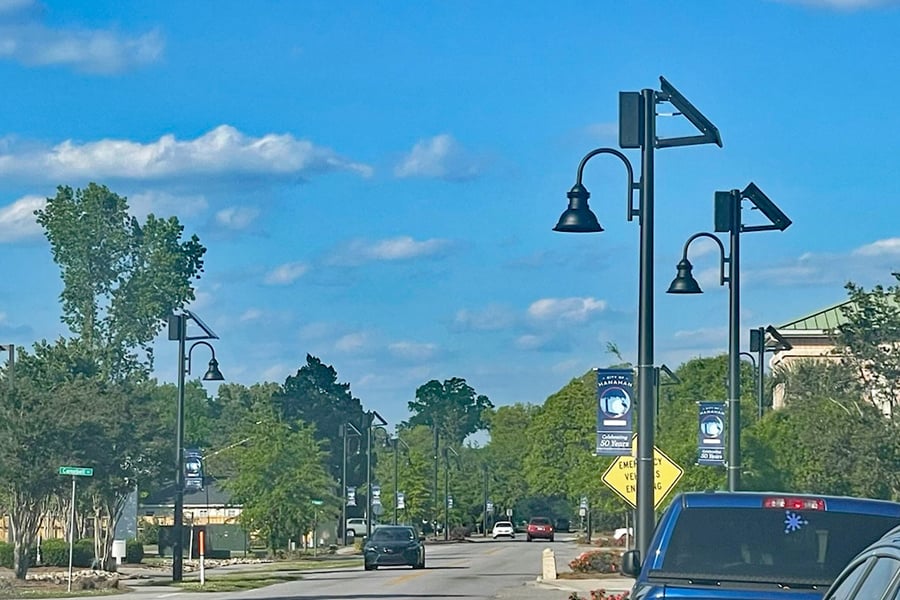
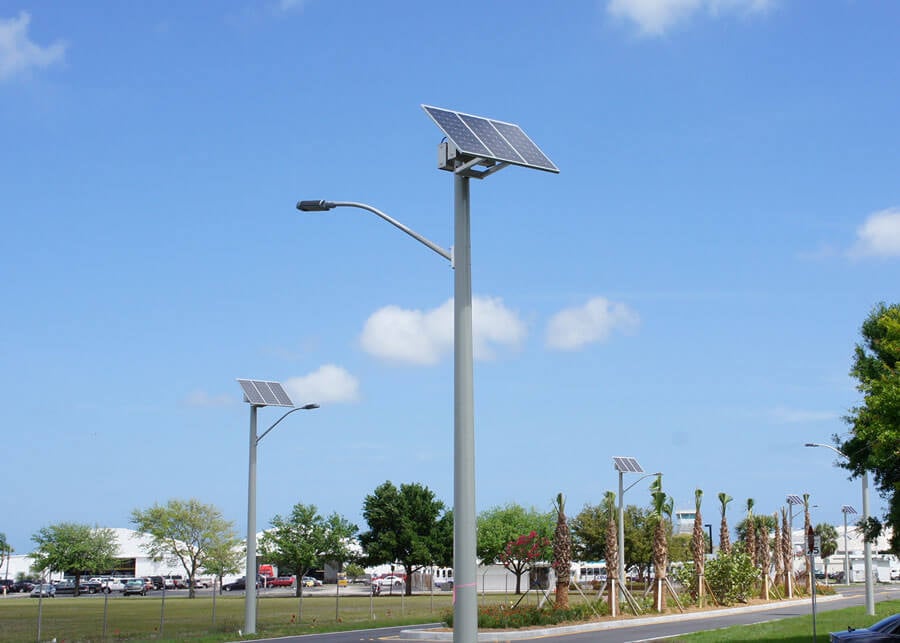
Solar LED Street Lighting Systems
Solar street lighting systems offer a reliable and eco-friendly way to illuminate roads and public spaces without the use of conventional power. By eliminating the need for electrical infrastructure, our solar street lighting solutions provide a cost-effective and sustainable option for enhancing visibility and safety. Ideal for cities and remote areas alike, they provide consistent lighting while contributing to a greener, more sustainable future.
Solar LED Street Lighting Systems
Every SEPCO solar lighting system is tailored to meet the project's needs, taking into consideration the system light output and operational requirements. It is sized for solar insolation availability, the longest night of the geographical installation, and worst-case scenarios. Below, you will find the most popular systems for solar street and roadway lighting projects. SEPCO systems can be designed to meet local AASHTO wind load ratings, BAA/BABA compliance, ETL listing for UL/CSA compliance, Dark-Sky, and FWC for turtle-friendly illumination, depending on project needs.
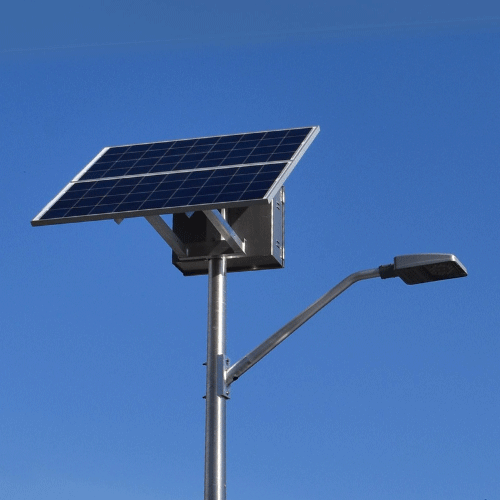
SolarViper System
The SolarViper system provides a modern way to light up the streets, roadways, and highways while cost-effectively reducing maintenance costs and energy bills. Each system is designed with a solar power assembly to operate the high-powered LED fixture at the required output for the time required based on the local sun availability.
Ready to learn more about the SolarViper system?
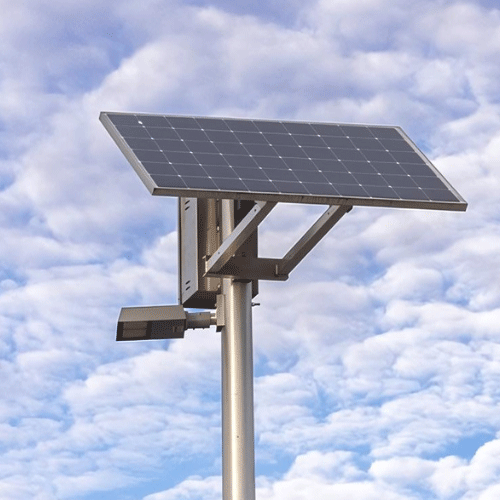
SolarRatio System
The SolarRatio system is a traditional shoebox-style system used for streets, roadways, and highways to help reduce energy costs and lower maintenance requirements. These systems are designed to meet the lighting and operation requirements based on geographical information for sun and length of night.
Ready to learn more about the SolarRatio system?
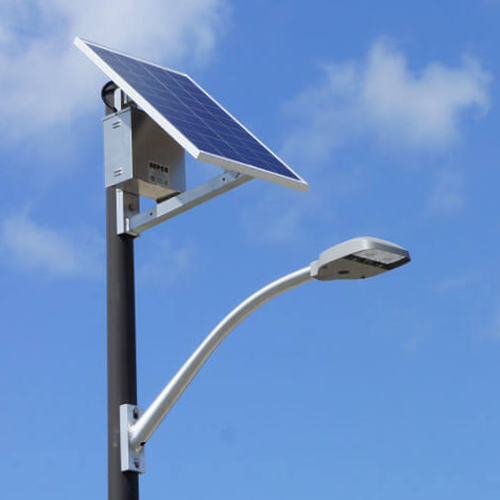
SolarASL System
The SolarASL system is a new way to light up streets and roads using solar power. It helps to save money on maintenance and energy bills. Each system is designed to use solar power to operate the bright LED lights for as long as needed, based on how much sunlight is available in the installation area.
Ready to learn more about the SolarASL system?
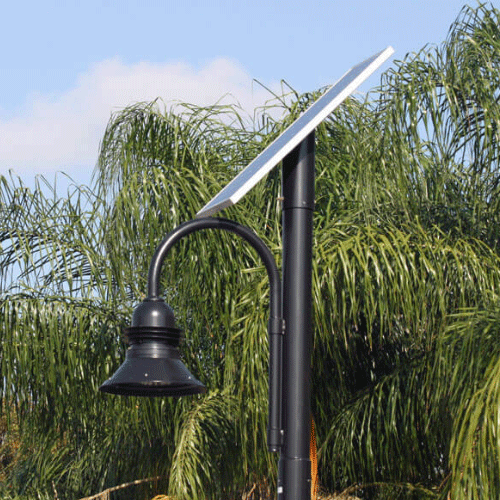
SolarUrban System
The SolarUrban system features a decorative bell-shaped fixture with high-output lighting without slacking on design. This setup meets the same lighting levels as other systems while providing an architectural flair for downtown, developments, and other applications requiring a decorative option.
Ready to learn more about the SolarUrban system?
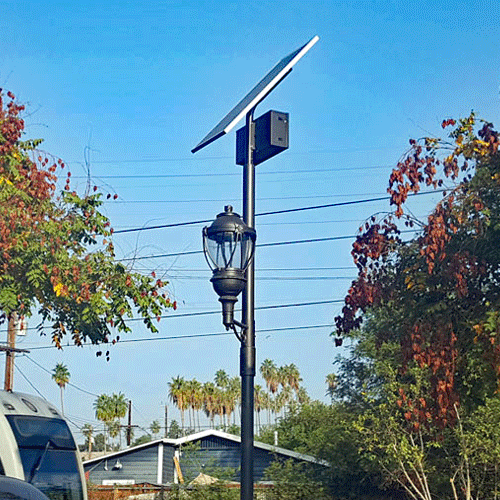
SolarLondon System
The SolarLondon system features a decorative acorn style fixture with high-output lighting without slacking on design. This setup meets the same lighting levels as other systems while providing an architectural flair for downtown, developments, and other applications requiring a decorative option.
Ready to learn more about the SolarLondon system?
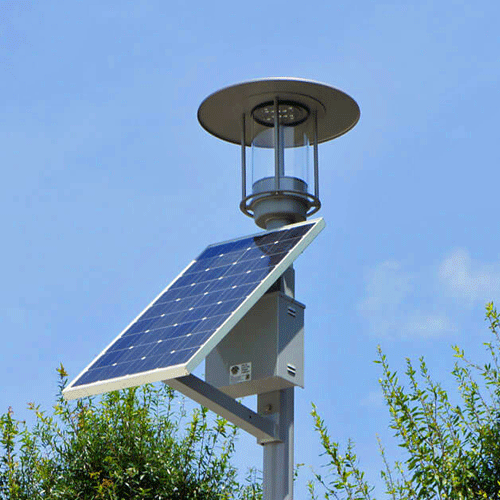
SolarSlide System
The SolarSlide system features a modern style fixture with high-output lighting without slacking on design. This setup meets the same lighting levels as other systems while providing an architectural flair for downtown, developments, and other applications requiring a decorative option.
Ready to learn more about the SolarSlide system?
SolarViper
SolarRatio
SolarASL
SolarUrban
SolarLondon
SolarSlide
Solar Street Lighting Projects
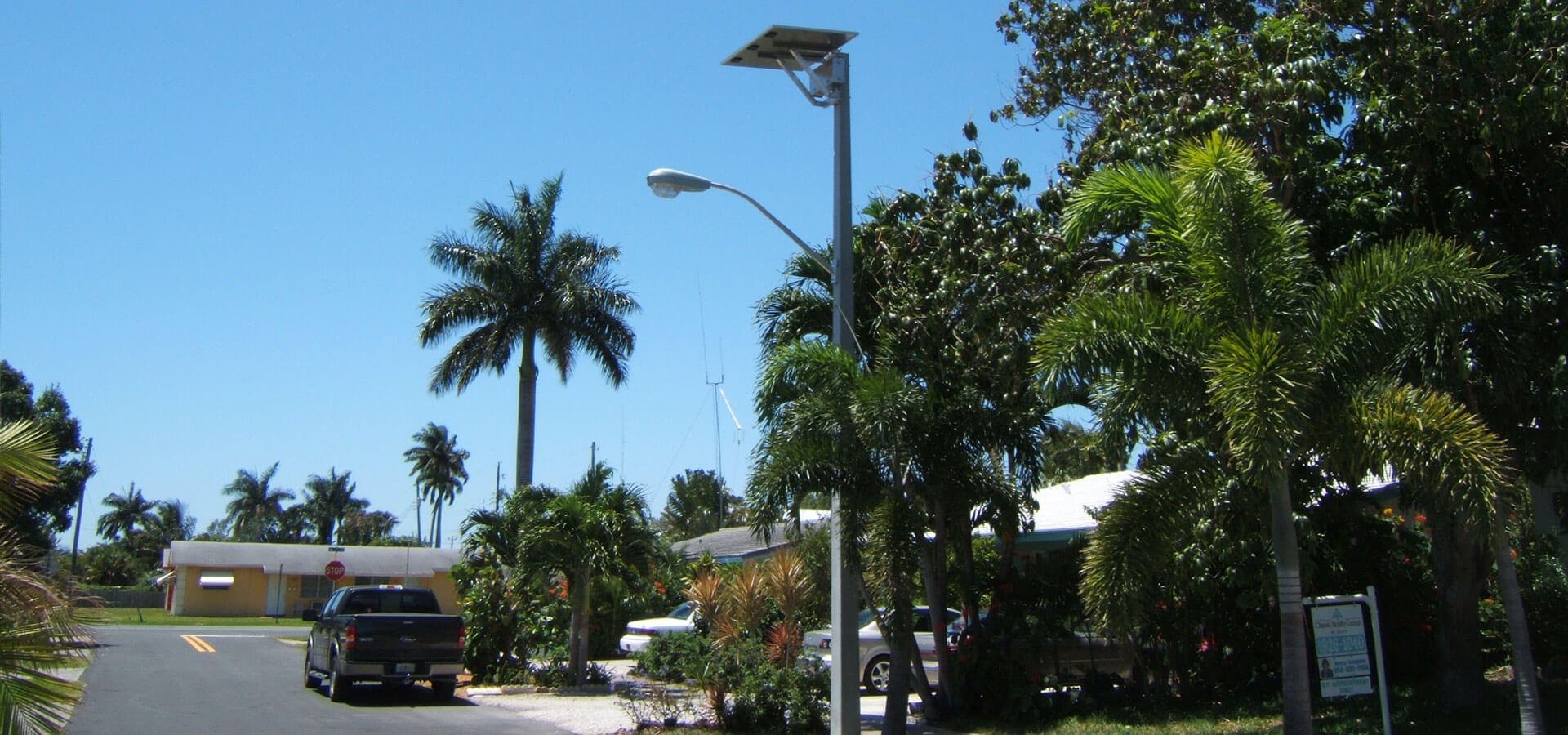
Dania Beach FL
Hurricane Resistant Solar Residential Street Lighting System
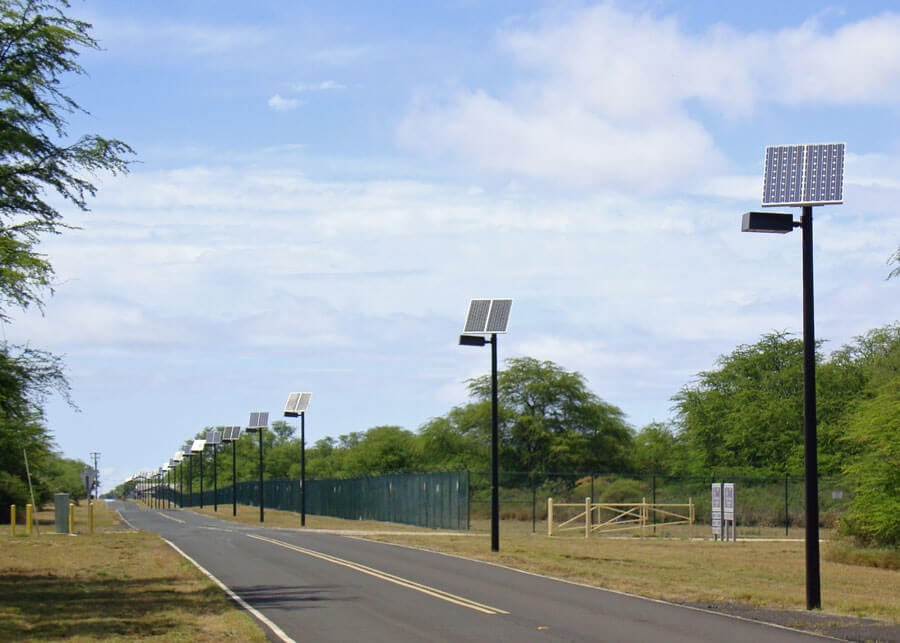
PMRF
Solar Powered Street Lighting
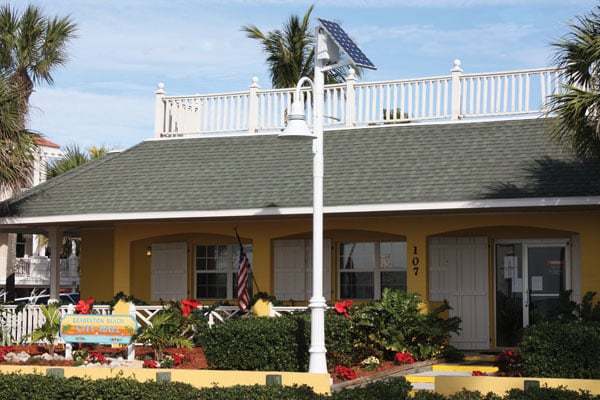
Bradenton Beach FL
Turtle Friendly Roadway Lighting
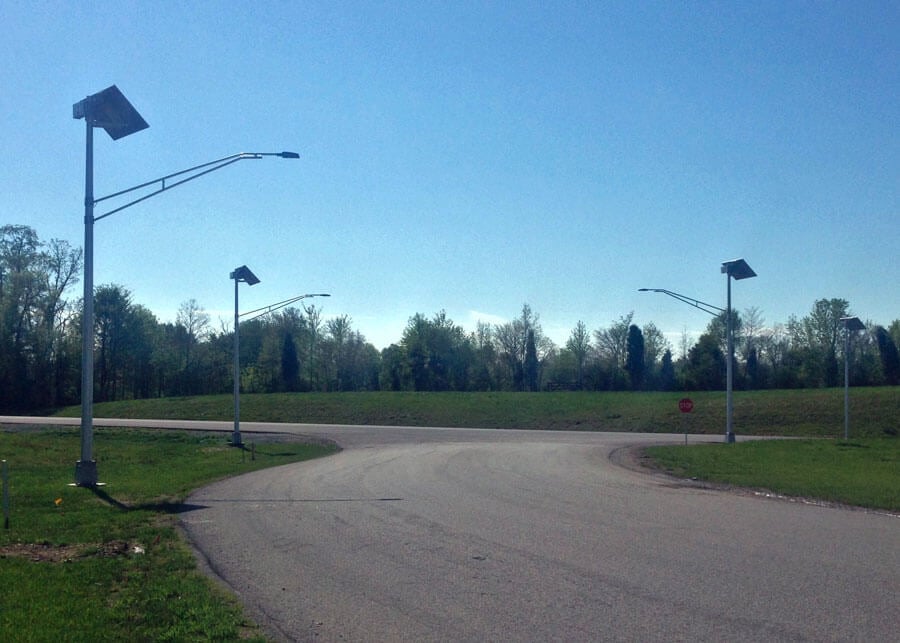
ATTC Manufacturing
Entrance Roadway Solar LED Lighting
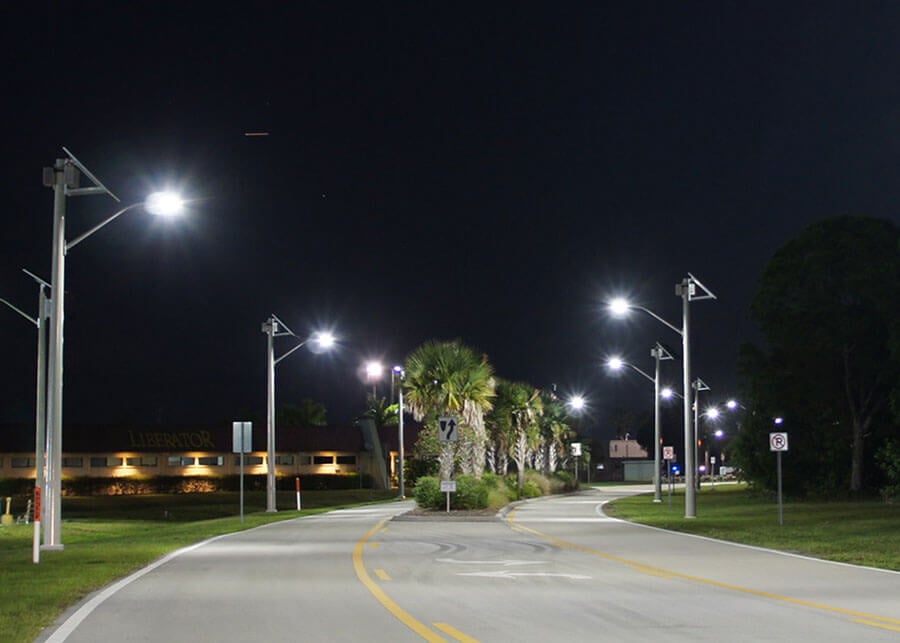
Martin County Airport
LED Solar Street Lighting Night

Martin County Airport
Solar LED Street Lighting Day
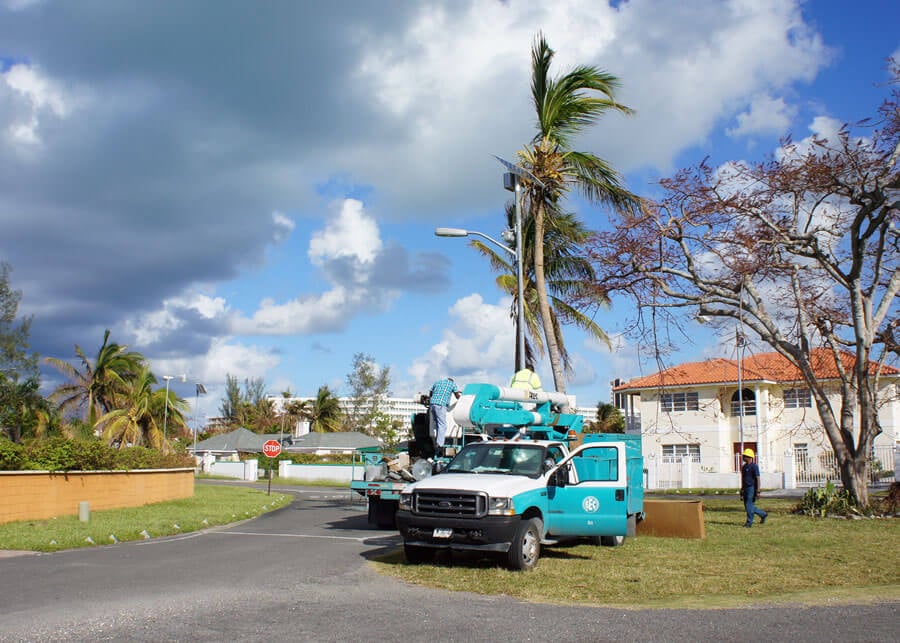
Westwood Villas Bahamas
Solar LED Residential Roadway Lighting
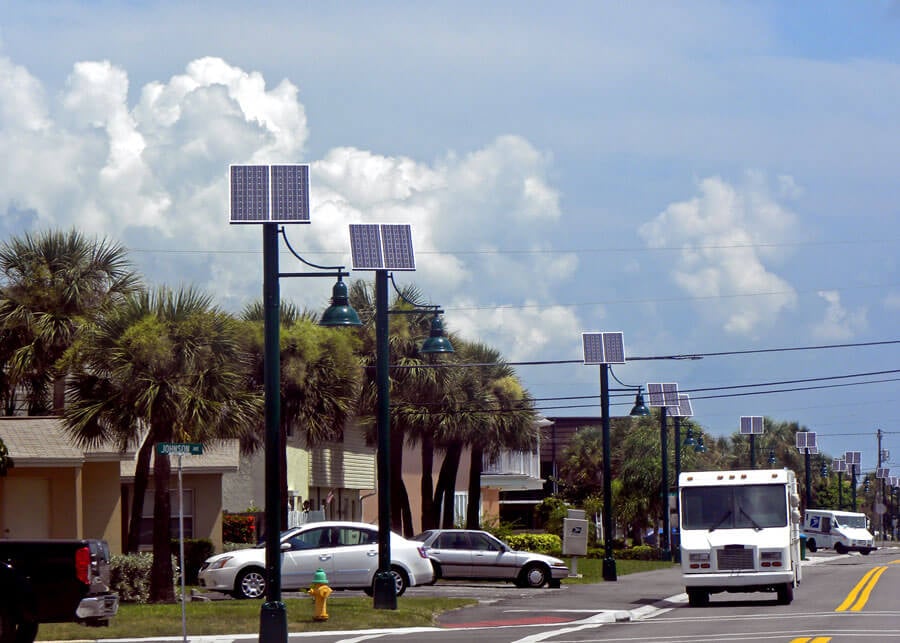
Cape Canaveral
Turtle Friendly Solar Street and Pathway Lighting Systems
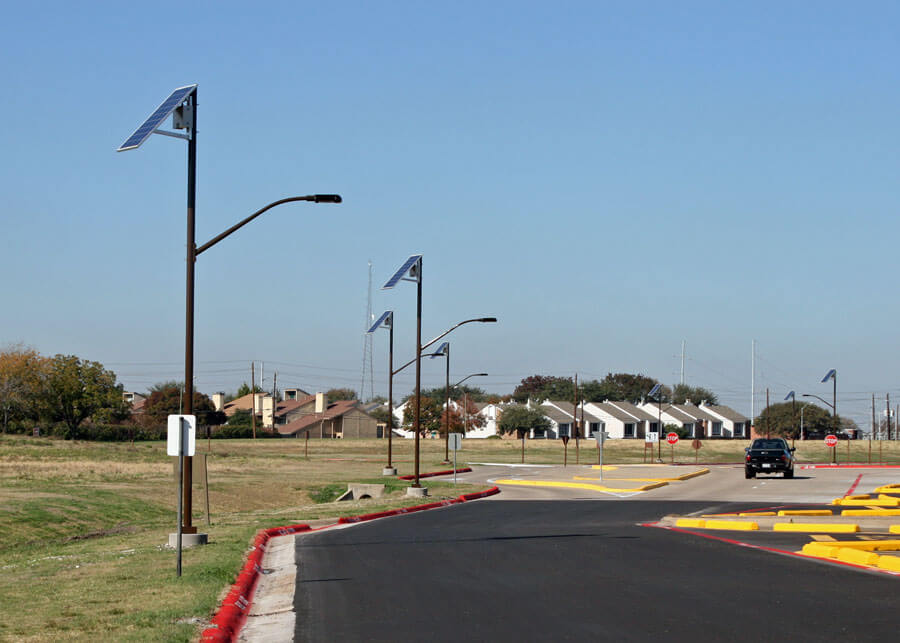
Dallas Community College
Solar LED Campus Roadway Lighting
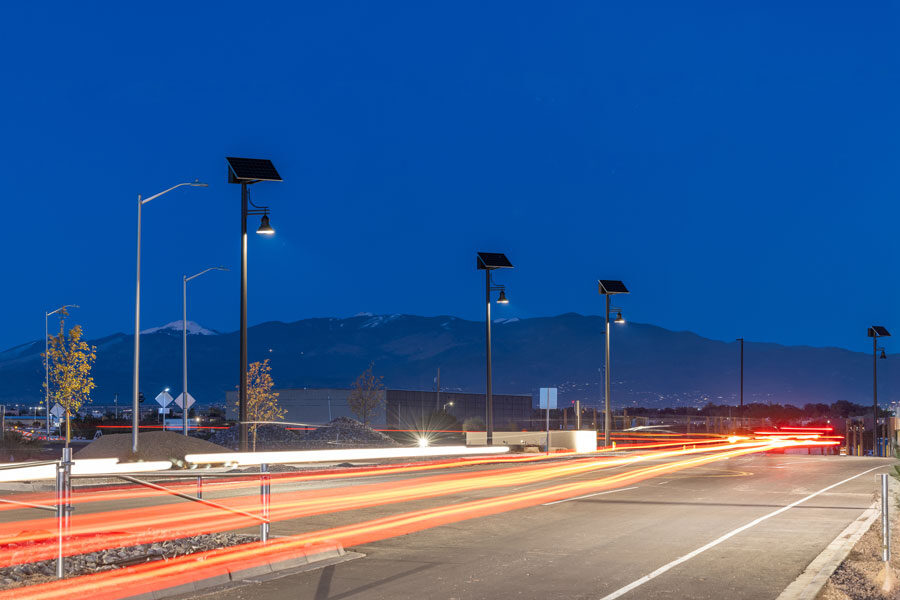
Santa Fe Airport
Solar Street Lights for Airport Roads
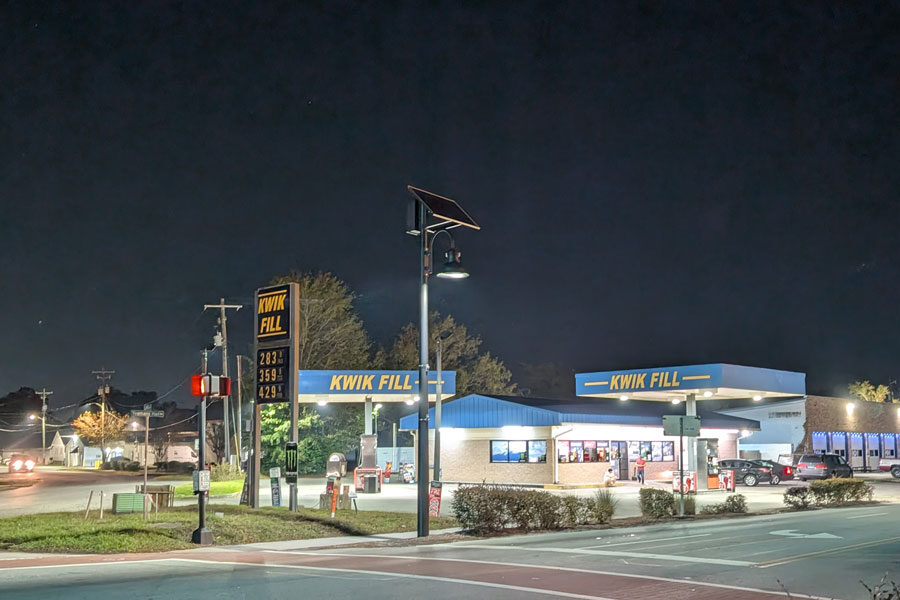
Hanahan, SC
Decorative Solar Street Light
Latest Solar Street Lighting Articles
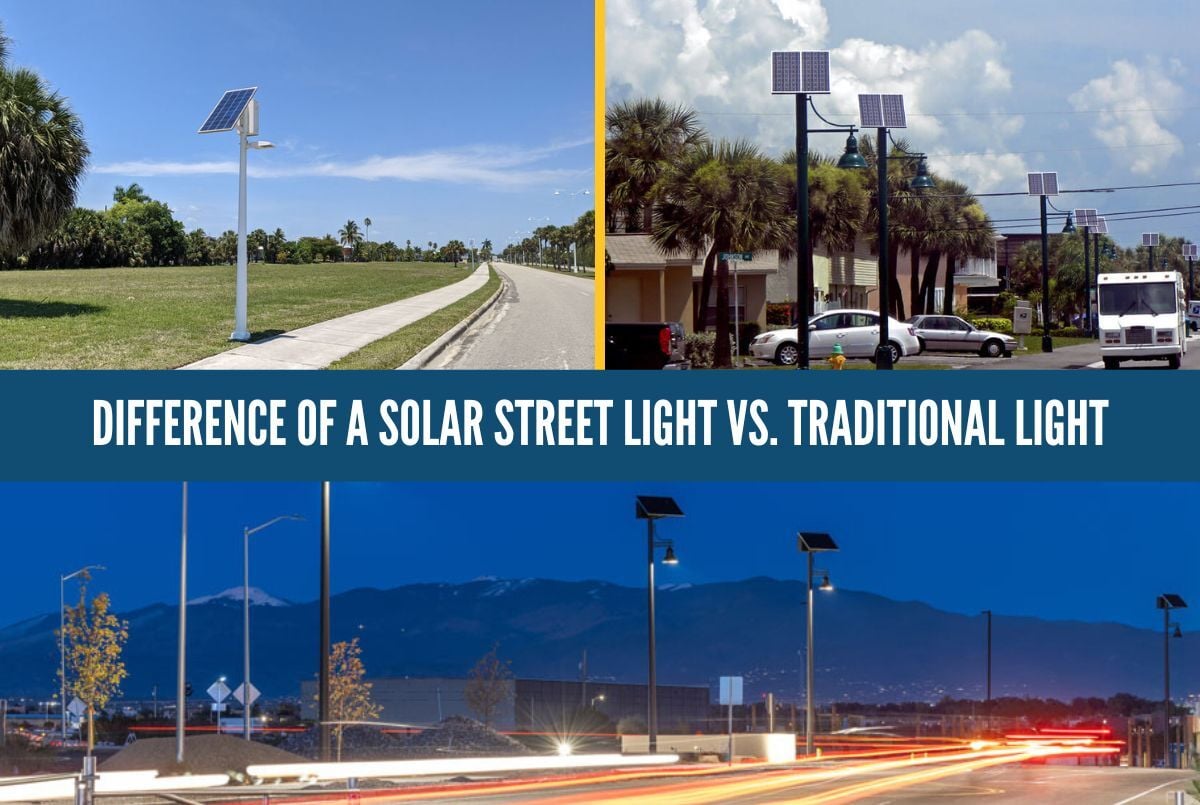
Difference of a Solar Street Light vs. Traditional Light
More cities and communities are making the switch to solar street lights over traditional grid-powered options, and the reasons behind this trend are...
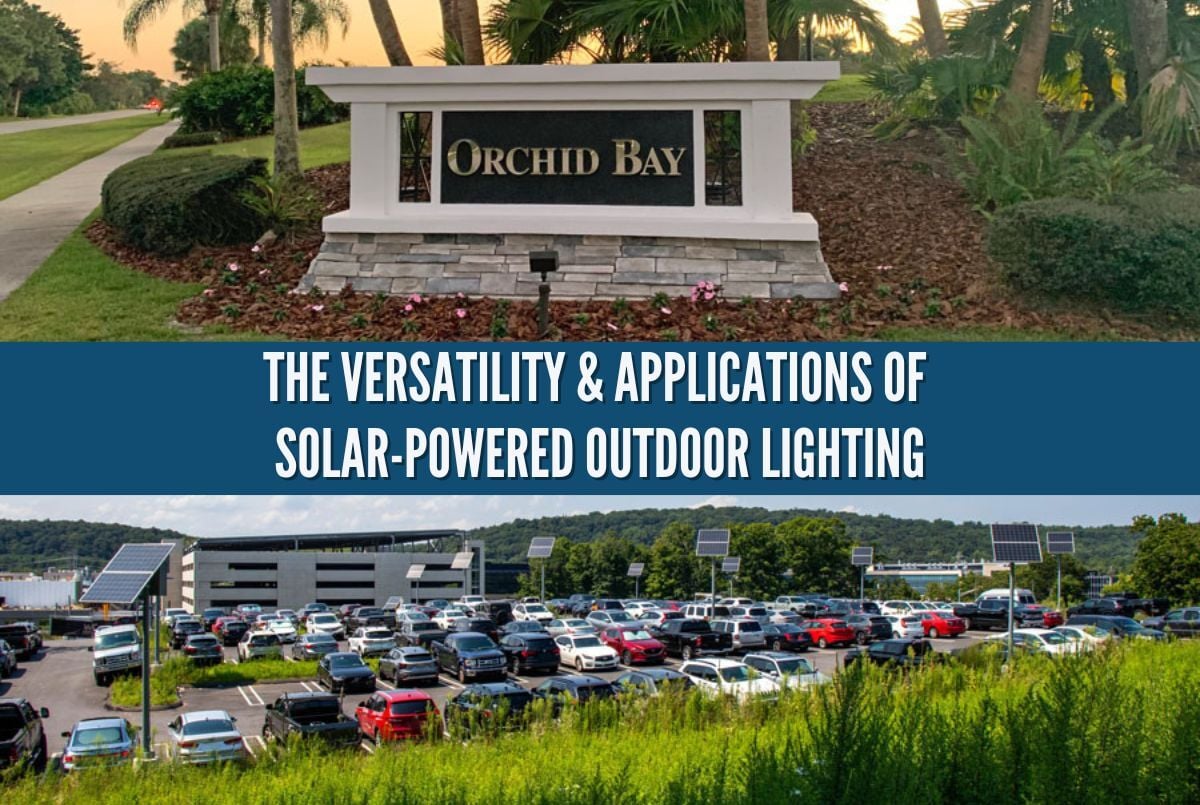
Solar-Powered Outdoor Lighting Solutions for Every Space & Purpose
Solar-powered outdoor lighting has evolved beyond simple pathway lights, offering versatile and efficient solutions for various needs. From enhancing...
Work with Experts
We at SEPCO know what solar lighting solution best suits your application, no matter the industry or geographic location. The availability and cost of energy, new infrastructure, and many government financial incentives make solar lighting the bright choice. We offer a broad array of solar-powered LED luminaires that provide reliable performance and maintenance-free operation, coupled with a solar power assembly's long life and sustainability.
Security
Exterior lighting protects property, people, and assets. Solar LED lighting not only offers better visibility and wards off potential threats, but it also offers security from brownouts and blackouts. Don't be left in the dark. Install a solar lighting option instead.
Savings
Solar LED lighting systems naturally offer energy savings. Sunlight is plentiful, and photovoltaic panels can harvest energy that grids cannot reach. Low maintenance and ease of installation are the cherry on top of the energy savings.
Sustainable
There is no more renewable resource than the sun. Capturing its energy to light up dark buildings and roadways is a great way to honor our resources. The ease of installation makes adding light to fragile environments less of a hassle and less harmful.
Economical
As a leading solar lighting system manufacturer, SEPCO wants to help you save energy costs and go greener with your next exterior lighting project. Our lighting designers will assist you in choosing the right illumination levels and luminaires from our broad selection of solar LED systems.
Solar Power
We offer custom-sized solar power systems for each project requirement and installation location. Every system is built to meet your project's needs and provide flawless operation year-round using local solar insolation and the length of the night for the project's worst-case scenario. No all-in-one system that leaves you in the dark!
LED Fixtures
High-powered LED light fixtures provide better illumination than old-style lamps. SEPCO has a wide range of fixtures available to meet every project requirement. With our partnership with Current, including Beacon, Kim, AAL, and more, our solar lighting systems can easily adapt to your project needs.
Controls
Custom control electronics provide light when you need it most. We design our commercial solar lighting systems with a standard set of controls to provide lighting as the project design parameters require. All systems are designed to operate during worst case scenario
Design
SEPCO offers comprehensive light plan engineering. Our on-staff engineering team can help design your lighting plan by using standard IESNA lighting levels and your digital files. From small signs to large parking lots to complete developments, our engineers can handle it all.
Features & Benefits
- Grid-free solar lighting for streets and roadways
- Lower costs for most installations and zero electricity bills
- Multiple control options for various needs
- 5 years maintenance-free and warranty up to 25 years
- Poles rated to meet local AASHTO ratings
- Made in the USA in Stuart, FL
Robust Solar Panel Systems for Long-Term Reliability
Each SEPCO system includes a solar panel assembly carefully sized to meet your specific load and operational needs, factoring in winter solar insolation to ensure optimal performance year-round. We never compromise on sizing—our systems are designed with worst-case scenarios in mind, guaranteeing long-term reliability and efficient power generation. Our solar panels are engineered for durability, with a field life of 25+ years, backed by an industry-leading warranty. The panels are mounted using a robust 45° welded aluminum bracket, included with every system, allowing for secure installation on poles or walls. A roof mount option is also available.
Reliable, Maintenance-Free Solar Battery Assemblies
SEPCO's maintenance-free solar battery assemblies provide reliable backup power for a minimum of 5 nights using reliable GEL batteries. Our battery packs and control electronics are securely housed in a vented NEMA 3R aluminum enclosure with a keyed lock, ensuring both easy access for maintenance and enhanced security. The welded mounting channel aligns seamlessly with the solar panel bracket, allowing for simple, hassle-free installation on a pole with plug-and-play wiring. GEL batteries are non-hazardous, non-spillable, and come with a 5-year pro-rated warranty, offering peace of mind for years of reliable performance. For additional options, LifePO4 batteries are also available, providing even longer cycle life and higher efficiency.
High-Efficiency LED Solar Fixture Solutions
Each SEPCO solar lighting solution includes a high-performance, DC-powered LED light fixture designed to operate seamlessly with the solar power assembly. The fixture utilizes advanced directional optics and optimized light distribution patterns to deliver focused illumination exactly where it’s needed. Many of our fixtures are designed to meet Dark Sky and FWC Turtle-Friendly standards, ensuring minimal light pollution and environmental protection. Available in a variety of shapes and sizes, our lighting solutions are customizable to suit both aesthetic and architectural requirements.
Versatile Fixture Mounting Brackets
Our fixture mounting brackets are designed to securely attach the light fixture to poles, walls, or even the ground. These brackets are engineered to meet the specific requirements of each fixture, allowing for flexible mounting at the optimal height, independent of the solar power assembly.
Durable and Aesthetic Solar Light & Power Poles
SEPCO's solar light and power poles are meticulously designed to complement the overall system aesthetic while ensuring superior structural integrity. Each pole is built to meet or exceed local AASHTO wind load requirements for the installation area, providing reliable performance in various environments. We offer a range of pole materials, including steel, aluminum, fiberglass, concrete, and wood, with flexible mounting options such as direct embedment, bolt-down, transformer base, or helical base. Engineered foundations are also available upon request for an additional cost.
Working with SEPCO means working with leaders in the industry. Since 1994, we have been designing and manufacturing high-quality systems that are used around the world. Our solar lighting solutions are made to last covered by one of the best warranties in the industry.
Not sure where to start?
We know that deciding where to start in your solar street lighting journey can be difficult. That's why we have put together a comprehensive solar street lighting design guide to help walk you through the process. Click below to download the guide on designing a commercial solar lighting system for your street project.

